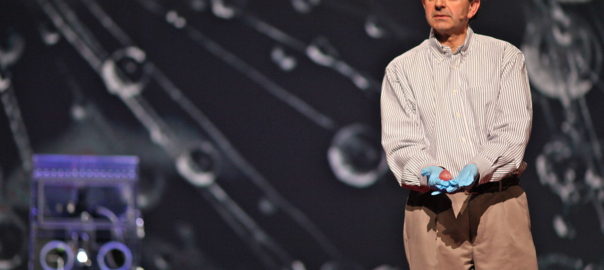The 2016 Innovator of the Year is a Regenerative Medicine Physician

Regenerative medicine continues to become more mainstream and available to the general population, which has major implications for achieving health and wellness in the fact of major obstacles. Perhaps nothing indicates the growth of regenerative medicine quite like Anthony Atala, M.D., the director of Wake Forest Institute for Regenerative Medicine (WFIRM), being named the 2016 Innovator of the Year.
Dr. Atala’s Accomplishments
Dr. Atala is trained as a pediatric surgeon, and his experiences operating on the youngest and most vulnerable patients propelled him to become a pioneer in growing and regenerative tissues and organs using 3-D bioprinting. According to Atla in an R&D Magazine interview, “There’s nothing more devastating than being in the operating room and doing surgery on patients where you’re putting things in that really don’t belong there, but you know that’s the only option you have. And you know that they’re prone to cause problems, but you don’t have a better option.” Rather than accepting the obstacles of pediatric surgery, Atala found his own way to provide young patients with the solutions they desperately need.
WFIRM has become a leader in using scientific discoveries to design clinical therapies, and in 1999 the institute’s scientists were the first in the world to implant a lab grown bladder into a human. Since then, Atala has led his team to develop and implement incredible technologies that truly transform lives. In his own words, “Having engineered tissue that’s made out of a patient’s own cells —to replace tissue with tissue—that’s really the goal,” especially as organ shortages become a public health crisis and the number of patients on transplant wait lists more than double.
Using 3-D Bioprinting to Change Lives
3-D bioprinting is one of the most vital and important regenerative medicine sciences currently being used and developed. It is defined as the process of creating cell patterns in a confined space while still preserving cell function and viability within that printed construct. Using the principles of regenerative medicine, 3-D bioprinting can be utilized to build tissues and organs for transplantation when other options do not exist.
Atala’s Wake Forest team uses a patient’s very own cells, taken from a small piece of tissue, in order to generate 3-D bioprinting products. Right now, Atala hopes to create insulin-producing cells in the lab and form blood vessels for heart bypass surgery. Atala is even working to increase his impact on patients in need by applying regenerative medicine to help wounded warriors. Everything from regenerating skin for burn injuries, restoring function to traumatized and paralyzed limbs, and reconstructing tissue is possible with regenerative medicine.
Atala summed up his career goals with simple words, “The goal, I think, is really to keep the patient at the forefront of everything you do. In terms of the research direction, you have to start with the needs of the patient, and then move backwards. At the end of the day, we’re doing this to make the patients’ lives better and they are the heroes really.”
Image credit: Wikimedia


